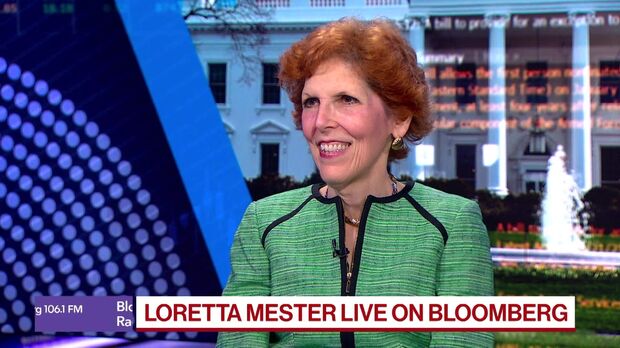
Fed’s Mester Predicts Fewer Rate Cuts Post-Trump Victory
Following Trump’s unexpected victory, former Federal Reserve policymaker Loretta Mester has shared her outlook on the future of interest rates. Mester, known for her insights into U.S. monetary policy, believes that the economy’s strength may warrant fewer rate cuts than previously expected. Her remarks come at a critical time, as market watchers try to predict the Fed’s moves in response to political and economic shifts.
Why Mester Sees Fewer Rate Cuts in 2024
Mester’s perspective on fewer rate cuts after Trump victory reflects a combination of economic resilience and potential inflationary pressures. Despite uncertainties surrounding the political landscape, Mester asserts that the economy has shown unexpected strength, suggesting that rate cuts may not be necessary to the extent initially projected. Instead, the Fed could maintain higher rates to curb inflation while fostering sustainable growth.
- Economic Resilience: With steady employment rates and moderate inflation, Mester sees a stable economy that may not require aggressive rate cuts to stimulate growth.
- Market Alignment: Mester also pointed out that the market appears to be aligned with the Fed’s cautionary stance, with bond yields reflecting an anticipation of slower rate reductions.
- Inflation Concerns: Although inflation has moderated, Mester warned of potential risks. Avoiding rapid rate cuts would help the Fed manage inflationary pressures should they resurface.
Impact of Trump’s Victory on Federal Reserve Decisions
Trump’s win introduces new dynamics to U.S. monetary policy. Mester’s insights underscore a view that the Federal Reserve, in response to economic signals, may adopt a more measured approach to rate adjustments.
- Fiscal Policy Influence: Trump’s administration could favor tax cuts or spending increases, which could lead to economic expansion. A boost in economic activity could keep inflation steady, reducing the need for significant rate cuts.
- Regulatory Landscape: Trump’s approach to deregulation may further support business growth, which, coupled with cautious Fed policies, could create favorable conditions for stable interest rates.
- Focus on Stability: For Mester, maintaining stability is crucial. She suggested that while the Fed could introduce rate cuts, they will likely be smaller and less frequent than markets previously anticipated.
Market Reaction to Fewer Rate Cuts after Trump Victory
Mester’s views highlight an emerging consensus among analysts who anticipate restrained rate cuts. Following Trump’s reelection, investors have shown confidence in a resilient economy, with financial markets displaying a level of stability uncommon in past election cycles.
- Bond Yields and Investor Confidence: Mester noted that bond yields have reacted positively, suggesting that markets expect a slower pace of rate cuts. This confidence reflects a broader belief in the economy’s capacity to withstand higher rates without stalling growth.
- Impact on Borrowing Costs: For businesses, a conservative approach to rate reductions means that borrowing costs may remain steady. While this could affect expansion plans, it ultimately encourages responsible spending and investment strategies.
- Long-Term Market Stability: Mester believes that fewer rate cuts can contribute to long-term stability, preventing sudden fluctuations in investment markets. This stable environment could foster sustained economic growth underpinned by cautious financial policies.
Future Outlook for Fed Policy with Mester’s Insights
Mester’s stance on fewer rate cuts post-Trump victory outlines a future where the Federal Reserve adopts a balanced approach. Her perspective offers valuable insights into what businesses and investors might expect in the coming year.
- Data-Driven Decisions: Mester emphasized the importance of data in shaping Fed policies. With strong economic indicators, the Fed may choose to delay cuts, opting instead for data-driven adjustments that best serve long-term stability.
- Potential for Gradual Adjustments: While fewer rate cuts are anticipated, Mester doesn’t rule out adjustments if economic conditions shift unexpectedly. She suggests that the Fed will continue to monitor inflation, employment, and growth before making further policy changes.
- Focus on Economic Sustainability: Mester’s approach aligns with a broader objective of economic sustainability. Rather than rapid cuts that could destabilize markets, a cautious strategy supports a more resilient and balanced economy.
Conclusion: Mester’s Forecast for Fewer Rate Cuts and Economic Stability
Former Fed official Loretta Mester’s prediction of fewer rate cuts post-Trump victory offers a pragmatic outlook for 2024. With economic resilience and potential fiscal changes in mind, Mester’s approach suggests a steady course aimed at preserving economic stability. For investors, businesses, and policymakers, her insights underscore the value of a cautious, data-centered approach to monetary policy, fostering sustainable growth in a time of change.